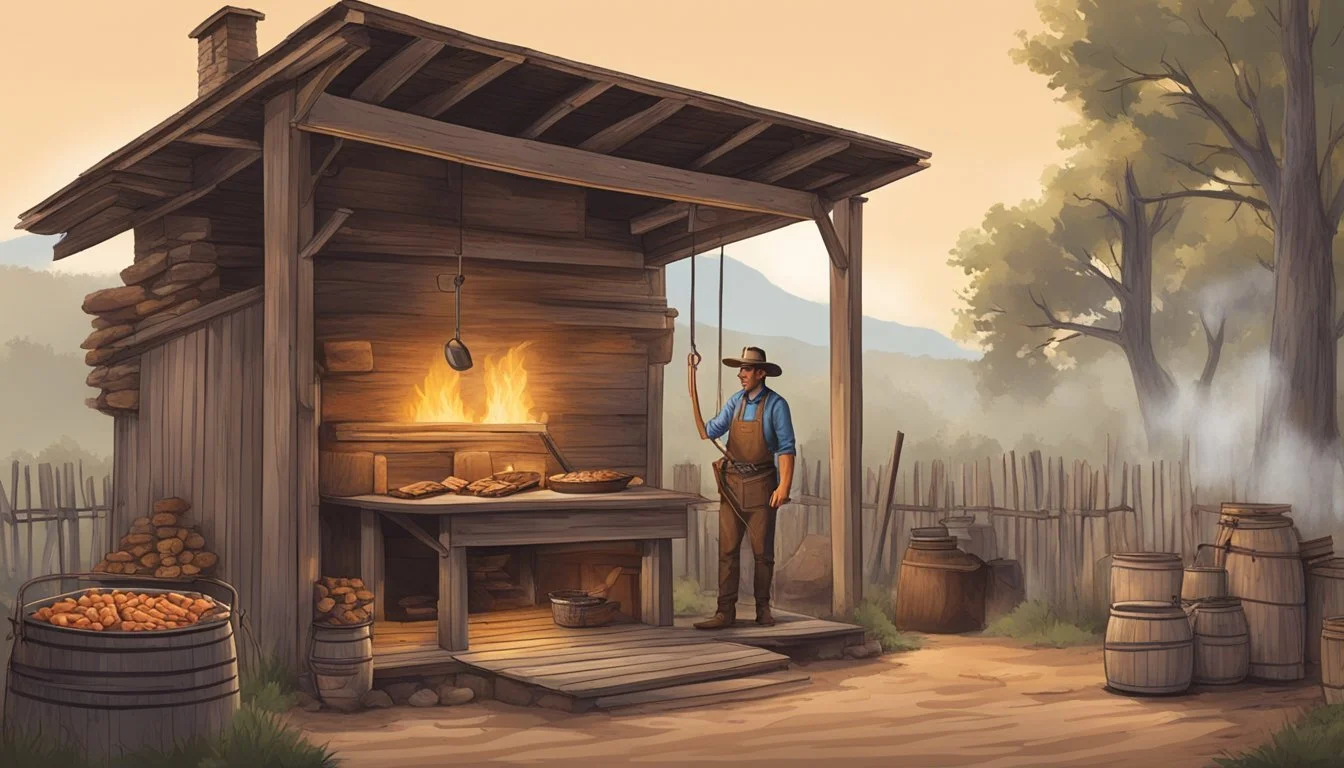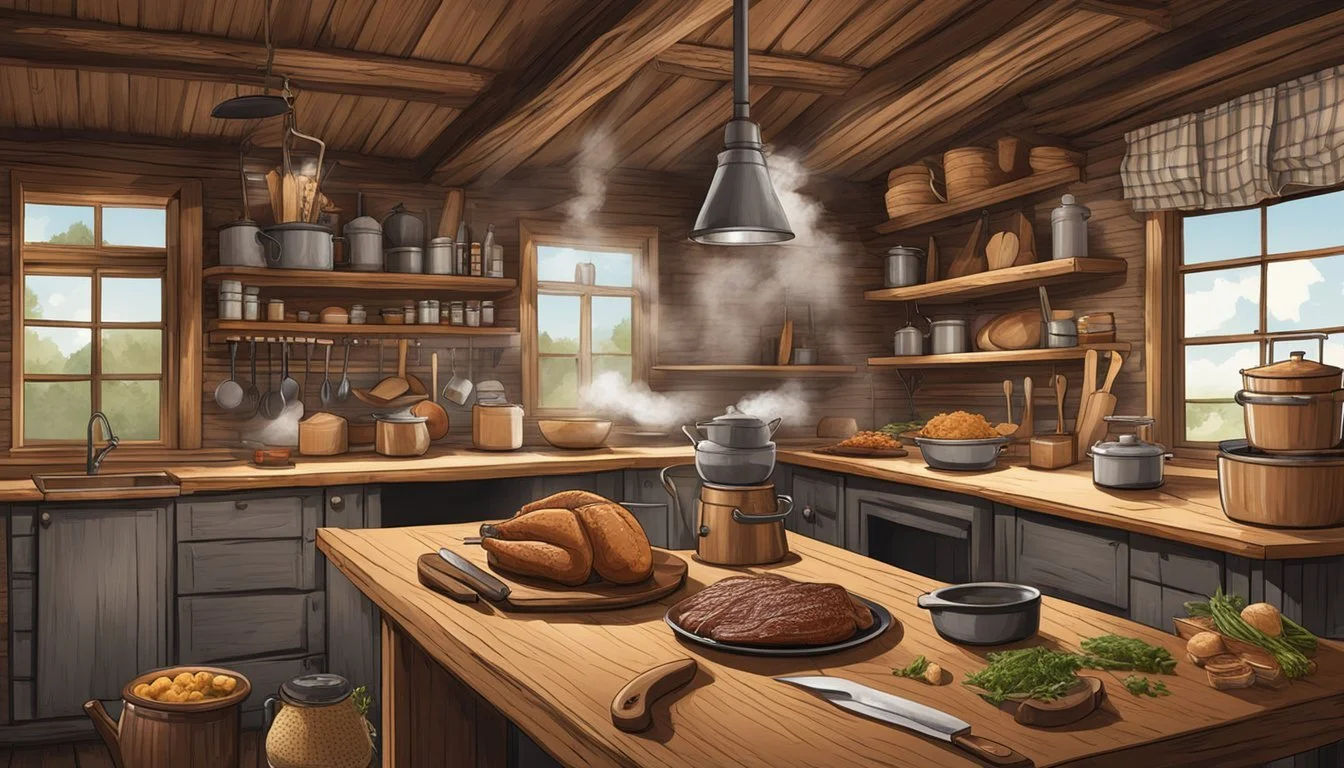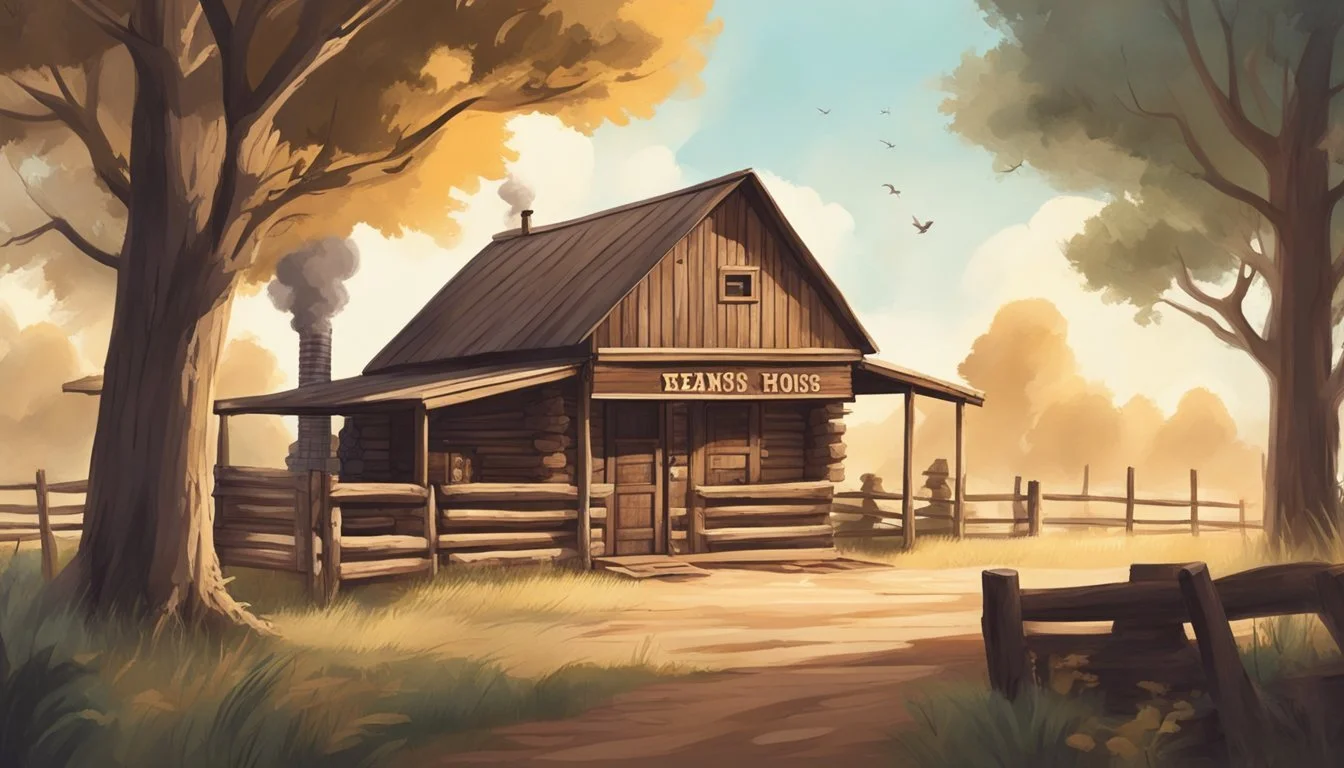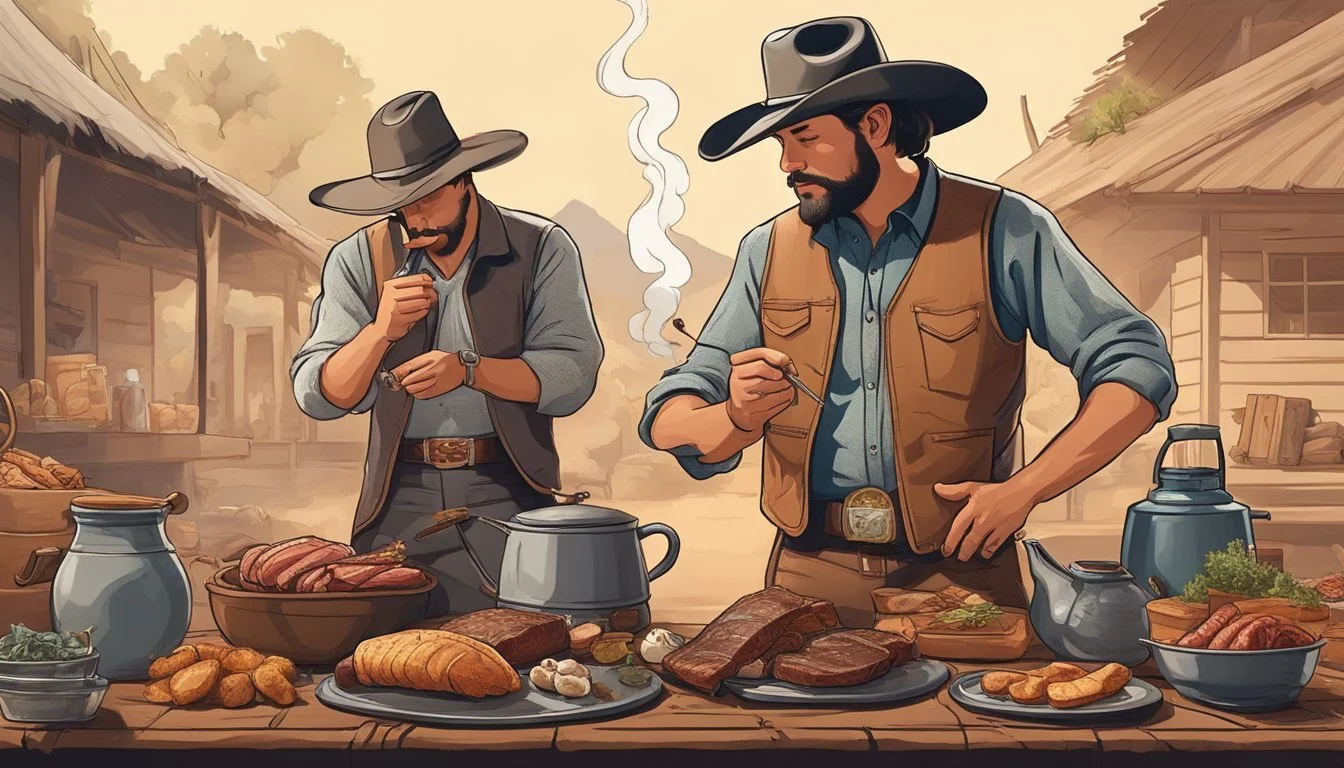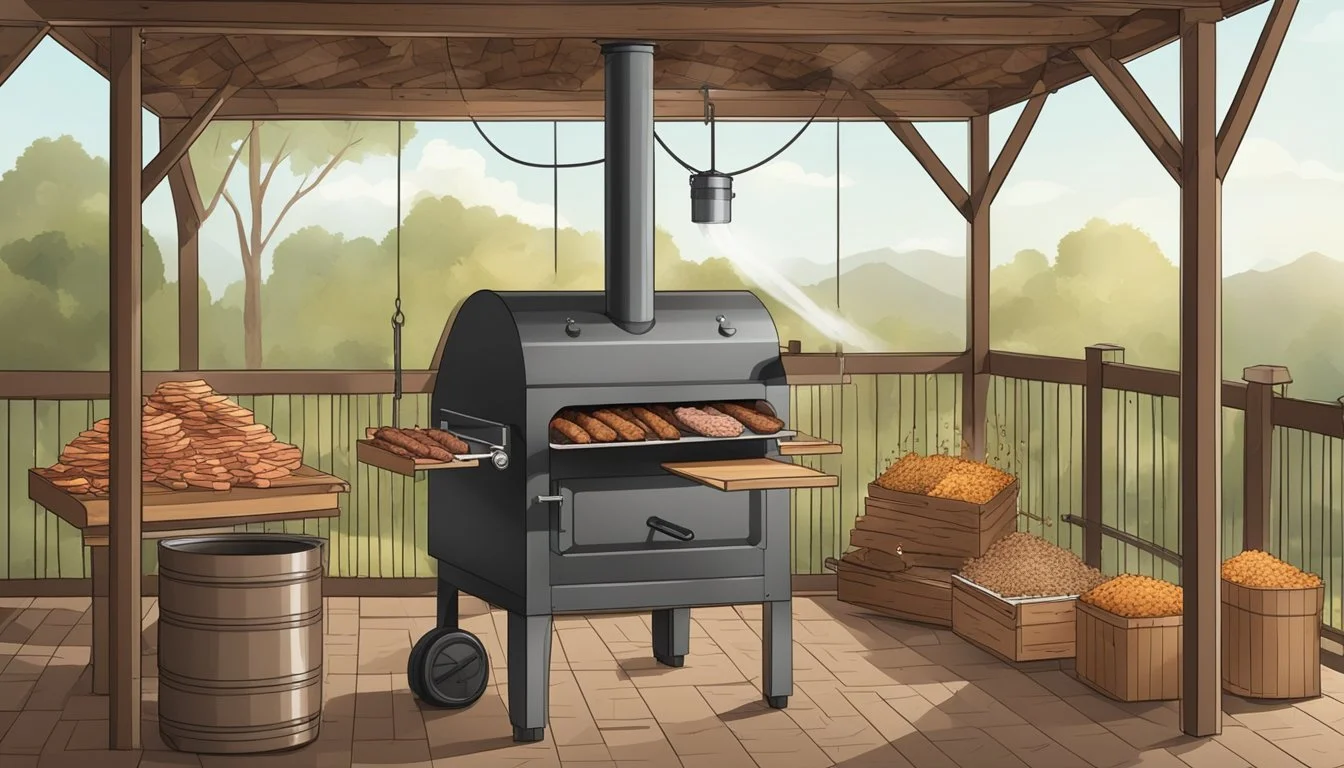The Texas Cowboy's Techniques for Smoking and Curing Meats
A Guide to Authentic Flavors
The Texas cowboy's legacy extends beyond the saddle and into the smokehouse, where techniques for smoking and curing meats are honed to perfection. Rooted in tradition, these methods were born out of necessity and transformed into a culinary art form by skilled ranch hands. The cowboy-style barbecue of West Texas, in particular, is distinct: meats are meticulously smoked over open mesquite fires, a practice that harks back to the days of frontier ranch cookouts. The result is a rich, smoky flavor that is as authentic to the Texan palate as it is evocative of the state's rugged history.
When it comes to smoking meats, precision and patience are the hallmarks of the cowboy method. Smoking—a favored technique among Texas pitmasters—requires a delicate balance of heat and time to ensure the meat is tender and imbued with flavor. Pitmasters choose from a variety of meats, traditionally including beef, goat, and mutton, each requiring careful attention to detail. The low-and-slow approach is essential, sometimes involving hours of cooking at controlled temperatures to achieve the fall-off-the-bone tenderness that barbecue enthusiasts crave.
To preserve meat in the days before refrigeration, cowboys developed curing methods that have stood the test of time. These practices not only extend the shelf life of meats but also add layers of flavor. At the heart of the process is a carefully crafted rub, applied generously before smoking. Close to the culmination of the smoking process, a selectively timed application of barbecue sauce can both prevent burning and enhance moisture, all while adding that final touch of flavor that Texas barbecue is celebrated for.
The Heritage of Texan Meat Smoking and Curing
Texan meat smoking and curing methods are steeped in a rich historical tapestry, informed by cowboy culture and melding influences across periods and cultures, including the vaqueros of Mexico and the ingenuity of post-Civil War cowboy cooking.
Historical Evolution of Cowboy Culinary Techniques
The techniques used by Texas cowboys for smoking and curing meat have undergone significant changes since the early days. Initially, they relied on simple, rudimentary methods to preserve meat for extended periods. Cowboys would smoke meats over open fires during cattle drives, using basic seasoning primarily of salt and black pepper to enhance the natural flavors. The process has been refined over the years but still holds true to its simple and effective roots.
Influence of the Vaquero and Mexican Traditions
Vaqueros, the original cowboys of Spanish Mexico, were adept cattle herders whose traditional methods deeply influenced Texan cowboy practices. Smoking and curing techniques, along with rugged culinary customs, were inherited from these skilled horsemen. They brought expertise in smoking meats using mesquite and other woods native to Texas, which imparted a distinct flavor profile cherished in Texan barbecue.
Post-Civil War Developments and Chuckwagon Cooking
After the Civil War, there was a proliferation of cattle drives across Texas, which gave rise to the role of the chuckwagon. Innovated by Charles Goodnight, a cattle rancher, the chuckwagon served as a mobile kitchen providing cowboys with essential sustenance. Smoking meats became an operational necessity, ensuring that cowboys had access to preserved food that could withstand the harsh conditions and long journeys through the Texan countryside. Chuckwagon cooking ultimately became a foundational pillar of cowboy tradition, cementing the importance of smoking and curing within Texan culinary heritage.
Fundamentals of Smoking and Curing Meats
In Texas cowboy cuisine, smoking and curing meats is pivotal, transforming simple cuts into flavorsome delicacies through meticulous preparation and patient cooking techniques.
Understanding Meat Selection and Preparation
Successful smoking begins with proper meat selection and preparation. It is essential for one to select high-quality cuts - often beef from cattle is the star - which are then prepared meticulously. Preparation techniques may include trimming excess fat and applying a rub. This foundation sets the stage for meats, like traditional smoked sausage, to absorb the rich, aromatic flavors during the smoking process.
The Art of Preserving Meats: Smoking and Curing Processes
Smoking and curing are time-honored preservation methods that enhance meat's flavor and shelf life. Wood smoke imparts a distinctive taste and also acts as a preservative. Curing involves treating the meat with salt, nitrates, or sugar, which draw out moisture and prevent spoilage. They frequently combine these two processes to create signature Texan flavors.
Equipment and Techniques for Optimal Results
The choice of equipment is critical for achieving optimal smoking results. Traditional pits or modern smokers are employed, each requiring mastery over temperature and smoke control. Techniques vary from hot smoking, which cooks the meat thoroughly, to cold smoking, more suitable for flavoring. Meats such as beef brisket (What wine goes well with beef brisket?) benefit from long, slow smoking over woods like mesquite, which are indigenous to West Texas and contribute to its characteristic profile.
The Cowboy's Kitchen: Tools and Ingredients
The success of smoking and curing meats in the Texan cowboy tradition is contingent on having the right tools and ingredients. These essentials underpin the distinctive flavors and textures characteristic of cowboy cuisine.
Essential Equipment: From Dutch Ovens to Cast-Iron Skillets
A Dutch oven and cast-iron skillet are quintessential equipment in a cowboy's kitchen. These robust cooking vessels serve multiple purposes, from simmering beans to baking cornbread.
Dutch Ovens: Ideal for slow cooking and even heat distribution, necessary for tenderizing cuts like chuck.
Cast-Iron Skillets: Provide superior heat retention for searing meats and are versatile for both indoor and outdoor cooking.
Key Ingredients: Spices, Vegetables, and Meats
The simplicity of cowboy cooking is enhanced by the bold flavors derived from a careful selection of spices and vegetables:
Spices: A blend of salt, black pepper, garlic powder, and cumin are staples in imparting that hearty, smoky flavor.
Vegetables: Onions, jalapeños, and bell peppers often accompany the meat in the cooking process, adding layers of flavor.
Meats: Beef, particularly chuck, is favored for its rich marbling and flavor. Smoking and curing these meats transform them into the centerpiece of the cowboy's meal.
Additionally, sides like beans and cornbread are traditional and their preparation is often facilitated by the very same Dutch ovens and cast-iron skillets used for the meats, highlighting the importance of having versatile cookware in the cowboy's kitchen.
Signature Dishes and Cowboy Cuisine
Texas cowboy cuisine is deeply rooted in tradition, bringing together robust flavors and hardy ingredients perfect for ranch life. This section explores iconic dishes where smoked and cured meats (What wine goes well with cured meats?) meet the heartiness demanded by the cowboy lifestyle.
Texas Cowboy Stew: A One-Pot Wonder
The Texas Cowboy Stew is a hearty dish brimming with flavors and is a quintessential one-pot meal ideal for the open range. Key ingredients include:
Meats: Often starting with seasoned ground beef or kielbasa sausage, the stew gains richness from these protein sources.
Beans: Cowboy beans, pivotal for texture and taste, are simmered to perfection within the mix.
Vegetables: Onions, garlic, and tomatoes meld with the meat and beans, adding depth and essential vitamins.
Broth: Beef broth creates the base, enveloping all elements in a savory liquid that's satisfying to the last spoonful.
The stew is seasoned predominantly with chili powder and cumin, spices that are emblematic of Texan cowboy meals.
Reviving the Classics: Brisket, Sausages, and Chili
Texan cowboys have long embraced traditional smoking and curing methods to prepare their meats. Here’s how these methods apply:
Brisket: Slowly smoked until tender, the brisket is a staple that highlights the smoky essence of mesquite.
Sausages: Kielbasa sausage, with its distinct flavor, is often smoked to enrich its taste profile.
Chili: Ground beef forms the heart of this cowboy classic, with cumin and chili powder providing the characteristic spicy kick.
These dishes utilize simple but potent combinations of flavors, where the quality of the smoked and cured meats stands front and center. Each bite is a nod to the cowboy’s open-fire cooking traditions.
Cultural Significance and Modern Celebrations
Cowboy traditions continue to be celebrated today, with a focus on the preservation of these historical skills, particularly smoking and curing meats, through rodeos, museums, and festivals. These events and institutions play a crucial role in sustaining the cultural significance of Texas cowboys.
Cowboy Life and Rodeos: Keeping the Spirit Alive
Cowboy life encompasses more than the art of smoking and curing meats; it's about the resilience and skills developed over centuries of ranching. Rodeos stand as a contemporary platform where the multifaceted cowboy culture is not only showcased but also revered. Participants compete in events that echo the daily tasks of historic cowboy life, including livestock management and horsemanship. Every twist and turn in a rodeo ring mirrors the agility and tenacity essential to the cowboy way of life.
Major Rodeo Events Highlighting Cowboy Cooking Techniques:
Houston Livestock Show and Rodeo: Features live demonstrations of smoking and curing as part of its culinary attractions.
Fort Worth Stock Show and Rodeo: Offers a window into cowboy culinary heritage alongside its competitive events.
Museums and Festivals: Preserving the Legacy
Museums dedicated to cowboy heritage meticulously curate artifacts and exhibits that detail not only the history but also the techniques of meat preservation that were vital to the cowboy diet. These institutions serve to educate the public about the evolution of cowboy culture, from its roots to its ongoing influence.
Key Museums and Festivals:
Museums:
National Cowboy & Western Heritage Museum: Preserves cowboy history and educates visitors on ranching life.
King Ranch Museum: A historical exploration into one of the country’s oldest ranching operations and its cowboy customs.
Festivals:
Texas Cowboy Reunion: An annual celebration of cowboy traditions including culinary practices.
American Chuckwagon Association Championships: Where chuckwagon cooking competitions honor the historical cooking methods of cowboys.
These celebrations not only preserve but also impart the rich tapestry of cowboy culture to newer generations, ensuring that the legacy of the Texas cowboy remains an enduring part of American heritage.
Practical Guide to Smoking and Curing at Home
When embracing the Texan cowboy tradition of smoking and curing meats at home, one must use the right materials and precise techniques to achieve ideal results. This guide is tailored to assist anyone in mastering these methods.
Selecting the Right Fuel and Managing Fire
The essence of cowboy-style meat smoking is in using the appropriate fuel to create the quintessential smoky flavor. Mesquite, a wood native to Texas, burns hot and fast, imparting a signature flavor well-suited for quick grilling. For smoking, a longer-lasting wood like hickory or pecan provides a steadier heat source. For home smokers, charcoal can be supplemented with wood chips to resemble the open fire experience.
For direct grilling:
Use mesquite wood for a strong, earthy smoke flavor.
Meat should be cooked quickly over high heat.
For traditional smoking:
Opt for woods like hickory or oak.
Maintain a consistent temperature range, ideally between 225-275°F.
Managing the fire in a home environment involves maintaining a steady temperature. A smoker should preheat to the desired heat range before adding the meat. Airflow is also crucial; vents should be adjusted to control the burn rate of the fuel, thereby managing the smoker's internal temperature.
Controlling Moisture and Temperature for Perfect Smoking
Moisture and temperature control determine the texture and flavor of smoked meats (What wine goes well with smoked meats?). Meats should be kept moist to prevent drying out over the long cooking process. This is achieved through a water pan in the smoker, which adds humidity and helps regulate temperature.
Temperature control:
Use a reliable thermometer to maintain a constant internal smoker temperature.
A heat range of 225-275°F is ideal for smoking most meats.
Moisture maintenance:
Introduce a water pan into your smoker setup.
Maintain water levels to ensure a moist environment.
One should closely monitor both temperature and humidity levels throughout the smoking process. They may periodically add water to the pan to ensure consistent moisture, and regulate smoker vents to maintain a steady temperature. This patience and attention are critical to upholding the cowboy tradition at home, resulting in perfectly smoked meats that pay homage to the range cookouts of old.


